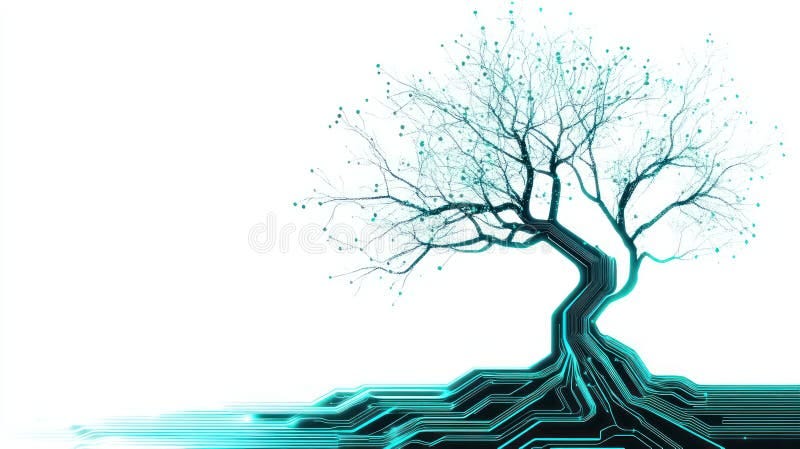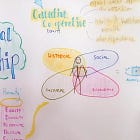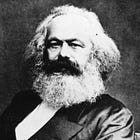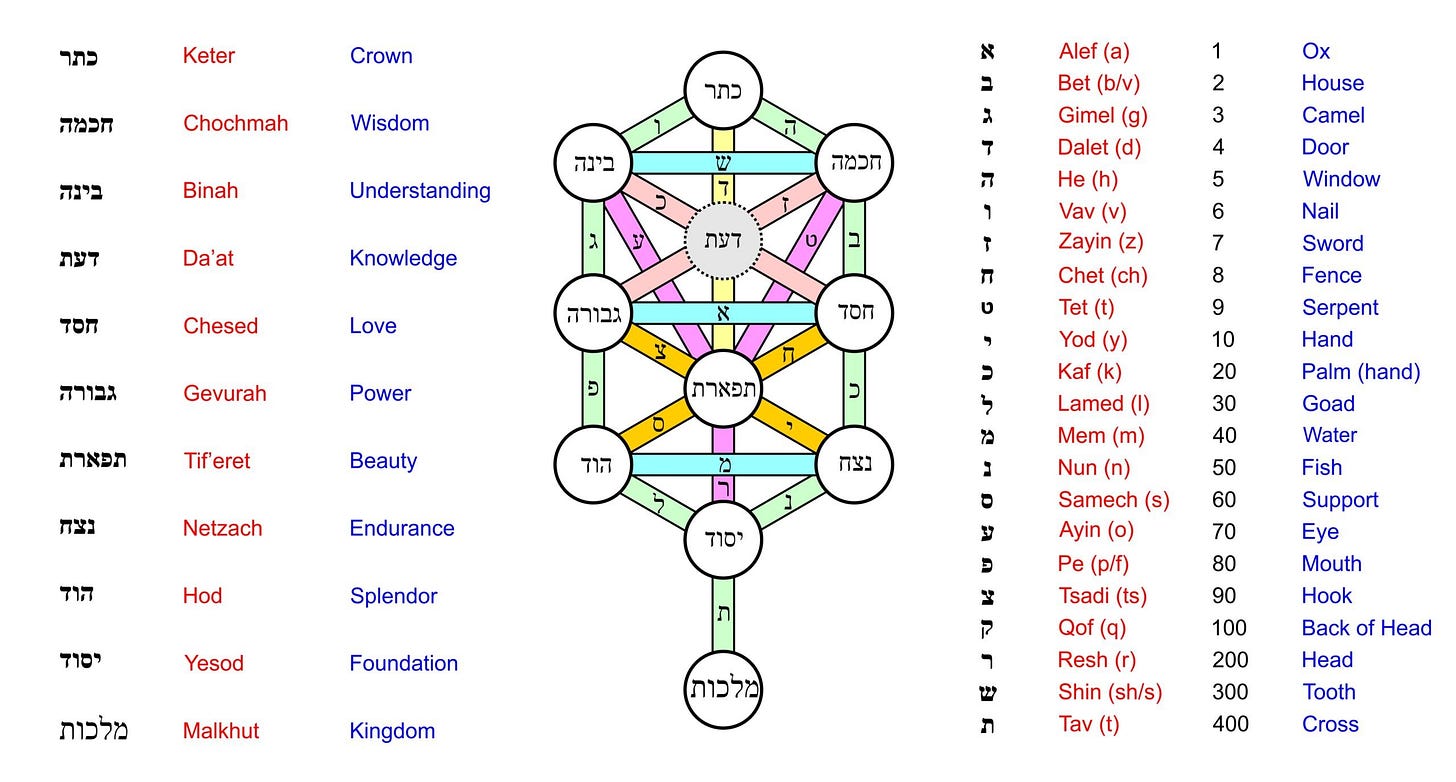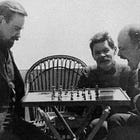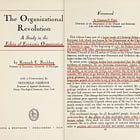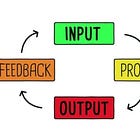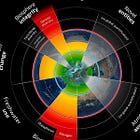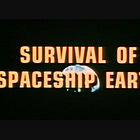Connecting the Metaphysical
From the spiritual to the material
What if the most famous mystical diagram in Western esotericism — the Kabbalistic Tree of Life — contains a pattern for systematic transformation?
And what if Marx (and Engels) recognised — and corrupted — this pattern and developed it into a systems theory blueprint for total control?
Executive Summary
When adapted in a systems theory context, the Kabbalistic Tree of Life can function as a transformation algorithm — a systematic blueprint for comprehensive social control that Marx might well have appropriated for his Communist Manifesto. Marx's ten planks map precisely onto the Tree's ten nodes (Sefirot), connected by 22 information pathways that create a complete cybernetic control system.
Throughout the Manifesto, Marx reinforces a four‑domain architecture — standardise knowledge, build information systems, centralise energy (resource) control, and reorganise land (territory). This isn't coincidental — it reflects the functional requirements of systematic transformation and full spectrum control.
Alexander Bogdanov converted these patterns into early stage systems theory decades before general systems theory and cybernetics were developed. These same structures appear in contemporary systems theory and algorithmic governance, implemented through borderline identical frameworks:
The Sustainable Development Goals provide the teleological direction.
UNESCO controls the knowledge to information pipeline through Global Ethics frameworks1 and UN Global Citizenship education2, while the Earth Charter adds a planetary stewardship dimension to its ethical mandate.
Microsoft’s Planetary Computer (and other similar solutions) serves as a digital twin for global energy flows, while One Health as a framework controls the biosphere.
UN‑Habitat3 reorganises land settlements via the Ecosystem Approach, while GEOSS provides planetary surveillance networks.
Universities, in turn, function as the primary replication mechanism, embedding this logic into human minds.
The pattern transcends ideologies — whether through mystical practices, revolutionary politics, or digital governance. In this systems theory context, the Tree of Life isn't religious symbolism but the deep structure of systematic change itself.
Marx’s ten planks thus can be taken to instantiate a cybernetic architecture that mirrors — and corrupts — the Kabbalistic Tree of Life; a pattern later formalised by Bogdanov and now underpinning algorithmic governance.
The full pattern here, thus, can be summarised as:
The Tree of Life → Marx → Bogdanov → Systems Analysis → Adaptive Management
Marx's Manipulative Method
Marx's intellectual approach relies heavily on inversion and appropriation rather than original analysis. Throughout the Manifesto, he and Engels commonly attack opponents through ridicule rather than substantive engagement, while systematically inverting existing frameworks while preserving their structural logic.
This opportunistic method suggests Marx would readily hijack any analytical framework — mystical, philosophical, or scientific — if it provided useful organisational logic. His systematic insights, however acquired, identify genuine structural patterns that breech his own ideology and manipulative rhetorical tactics.
The fraudulent methods don't invalidate the cybernetic sophistication — they may actually explain it. Marx might well have worked with pre-existing templates, and not invented his transformation theory from scratch.
Sure, this is an interpretation, but it aligns with available fact worryingly well.
Further, this isn't so much mystical speculation, but rather recognition that both ancient wisdom traditions and modern revolutionary theory identifies the same ultimate patterns. The Tree of Life — when reinterpreted through cybernetic systems theory — reveals itself as a transformation algorithm; one that Marx's ten planks follow with startling precision.
The Tree of Life depicts divine energy descending from pure spirit (Keter) into concrete matter (Malkhut). Viewed through a systems‑theory lens, Marx’s hierarchy behaves like a control stack: the policy layer issues directives downward, while error signals propagate upward as feedback4.
Ultimately both are cybernetic systems — one theological, one dialectical — and their convergence can now be observed manifesting as algorithmic governance.
From Mystical Emanation to Revolutionary Algorithm
The Tree of Life becomes a ten‑stage cybernetic pipeline — each Sefirah a processing node, each of the 22 paths a channel for feed‑forward directives and feedback loops. Marx’s ten planks slot fairly precisely into these stages, turning an ancient esoteric map into a blueprint of control:
Keter → System Initialisation
Plank 10: Free Public Education
Every system transformation begins with knowledge programming. Marx places education as the foundational requirement because you must standardise minds before you can coordinate behavior — education thus becomes the ideological ‘boot sequence’.Chokhmah → Innovation Engine
Plank 4: Confiscation of Counter‑Revolutionary Property
Revolutionary disruption requires breaking existing patterns. Confiscating property from counter‑revolutionaries shatters old legal frameworks — the innovation engine eliminating established norms to create space for new structures.Binah → Analysis Processor
Plank 3: Abolition of Inheritance
Analytical restructuring follows initial disruption. Abolishing inheritance is the rational implementation of equality principles — abstract ideals crystallised into legal code and restructuring intergenerational capital.Chesed → Resource Distribution
Plank 2: Progressive Income Tax
Resource allocation protocols redistribute wealth from concentrated to distributed ownership. Systematic generosity through tax policy ensures assets flow outward, seeding the new social order.Gevurah → Constraint Mechanisms
Plank 5: Centralisation of Credit
Financial discipline imposes limits on resource flows. By regulating credit centrally, the system enforces fiscal security and curtails market‑driven speculation.Tiferet → Integration Hub
Plank 6: Communication & Transport Control
The coordination layer that harmonises all functions. Control of information networks and logistics enables system‑wide synchronisation — data and goods move in lockstep.Netzach → Execution Engine
Plank 8: Industrial Armies & Universal Labor
Strategic implementation through organised force. Mobilising disciplined labor becomes the execution engine driving the revolution forward.Hod → Formalisation Protocols
Plank 7: State Factories & Planned Cultivation
Standardisation of production according to systematic protocols. Central planning dictates factory output and agricultural schedules, embedding formal rules into every process.Yesod → Infrastructure Layer
Plank 9: Agriculture/Manufacturing Integration
The foundational network merging urban and rural production. Integrating agriculture with manufacturing creates the transmission backbone for total transformation.Malkhut → Material Manifestation
Plank 1: Abolition of Private Property in Land
Final material output where all higher transformations become concretely embodied. Territorial reorganisation seals the system, turning policy into physical reality.
Viewed this way, Marx’s reinterpretation of the Tree’s ten nodes would form a cohesive ten‑step algorithm — and the 22 interconnecting paths ensure each stage informs and refines the others through continuous feedback loops. What began as mystical emanation becomes a fully cybernetic design for revolutionary change.
The 22 Pathways: Revolution's Nervous System
The real cybernetic sophistication emerges not just in the nodes themselves, but in their interconnections — the 22 paths connecting these nodes, the cybernetic ‘nervous system’ that makes the transformation algorithm actually function. These pathway connections represent functional dependencies that emerge from systems analysis rather than documented historical intentions, with each path representing specific information flows, dependency relationships, and feedback mechanisms:
CROWN LEVEL (Keter)
System Initialisation → Knowledge Programming
Keter → Chokhmah — Education enables Confiscation
Standardised ideology prepares the ground for legal expropriation.Keter → Binah — Education enables Inheritance Abolition
Knowledge programming creates the analytical framework for dismantling lineage-based wealth.Keter → Tiferet — Education enables Communication Coordination
Standardised minds require unified messaging for systemic integration.
WISDOM & UNDERSTANDING
Disruption → Analysis → Redistribution
Chokhmah ↔ Binah — Confiscation reinforces Inheritance Abolition
Dual mechanisms work in tandem to restructure wealth ownership.Chokhmah → Chesed — Confiscation enables Redistribution
Seized assets provide the initial pool for resource allocation.Binah → Gevurah — Inheritance Abolition enables Credit Control
Eliminating lineage transfers necessitates financial surveillance infrastructure.
MERCY & SEVERITY
Redistribution ↔ Regulation → Coordination
Chesed ↔ Gevurah — Taxation ↔ Credit Control
The core mercy/severity loop: redistribution tempered by financial discipline.Chesed → Tiferet — Redistribution requires Communication Infrastructure
Resource allocation depends on coordinated systems for delivery and oversight.Gevurah → Tiferet — Credit Surveillance requires Communication Systems
Monitoring financial flows demands integrated data transmission.
INTEGRATION HUB
Coordination → Execution, Standardisation, Infrastructure
Tiferet → Netzach — Coordination enables Execution
Communication systems mobilise labor into structured deployment.Tiferet → Hod — Coordination enables Factory Planning
Integrated logistics shape the organisation of production.Tiferet → Yesod — Coordination enables Infrastructure Planning
Communication networks are the precondition for spatial integration.
EXECUTION ZONE
Deployment ↔ Standardisation → Spatial Integration
Netzach ↔ Hod — Industrial Armies reinforce Factory Discipline
Military organisation enforces production regularity and labor conformity.Netzach → Yesod — Execution enables Spatial Integration
Mobilised labor physically implements the urban–rural merger.Hod → Yesod — Production patterns drive Infrastructure Design
Manufacturing logic dictates the reorganisation of geographic space.
FOUNDATION & OUTPUT
Infrastructure → Material Manifestation
Yesod → Malkhut — Infrastructure enables Land Transformation
Foundational systems prepare the ground for territorial reorganisation.
UPWARD FEEDBACK LOOPS
Material Output → Systemic Revision
Malkhut → Hod — Material outcomes revise Production Protocols
Observed results drive updates to manufacturing logic and standards.Malkhut → Netzach — Manifested failures reshape Strategy
Inefficiencies in output inform tactical adjustments and deployment.Malkhut → Tiferet — Output feeds back to System Coordination
Performance data refines integration across all functions.Malkhut → Gevurah — Output affects Financial Constraints
Economic outcomes recalibrate credit flows and fiscal control.Malkhut → Binah — New conditions alter Legal Structure
Evolving realities trigger legal and regulatory reform.Malkhut → Keter — Resulting system resets Knowledge
Material transformations reshape ideological baselines and initiate reprogramming.
Beyond the Ten Planks
But Marx's systematic thinking extends far beyond the ten-plank policy list. Throughout the Manifesto, nearly every major argument reinforces the same four-domain control architecture — and often in the precise sequence that systems theory would later identify as functionally necessary.
Knowledge Production as Foundation
Marx establishes epistemic control as the starting point: ‘The ruling ideas of each age have ever been the ideas of its ruling class’5. This isn't merely about educational policy — it's realisation that whoever controls the production of knowledge controls the framework within which all subsequent decisions appear rational. Plank 10's education mandate simply operationalises this deeper insight: standardise knowledge before attempting to coordinate behavior.
Information Systems Enable Coordination
Marx grasped that complex social coordination requires integrated information infrastructure: ‘The bourgeoisie, by the rapid improvement of all instruments of production, by the immensely facilitated means of communication, draws all, even the most barbarian, nations into civilisation’6. He recognised that the bourgeoisie's power flowed not just from factory ownership but from creating the world's first global nervous system — telegraphs, railways, market data, and standardised measurements. Revolutionary transformation would require inheriting and extending this same information grid. Hence Planks 2-4 and 6a: taxation, inheritance tracking, confiscation records, and communication control all depend on comprehensive surveillance and measurement systems.
Energy Control Determines Social Relations
Marx understood that social structure flows from control over productive energy: ‘In proportion as the bourgeoisie, i.e., capital, is developed, in the same proportion is the proletariat, the modern working class, developed’7. Class relations emerge from who controls credit, labor deployment, and industrial capacity. This drives Planks 5, 6b, 7a, 8, and 9b — centralising banking, transport, factories, industrial armies, and population distribution. Without energy control, the previous layers remain academic exercises.
Spatial Reorganisation Completes the System
Finally, Marx saw territorial reconfiguration as the completion of systematic transformation: ‘The bourgeoisie has subjected the country to the rule of the towns. It has created enormous cities, has greatly increased the urban population as compared with the rural, and has thus rescued a considerable part of the population from the idiocy of rural life’8. Physical space must be reorganised to lock in the new social arrangements. Planks 1, 7b, and 9a — abolishing land property, cultivating wastelands, and merging town with country — represent the material foundation that makes the entire system irreversible.
The Logical Cascade
This isn't coincidental ordering — it reflects functional dependencies that Marx analysed with remarkable precision. Without standardised thinking, measurement systems lack legitimacy. Without measurement systems, resource allocation becomes impossible to coordinate. Without resource control, spatial reorganisation cannot be enforced. Marx understood these as systemic requirements, not policy preferences.
Most tellingly, Marx analysed how the bourgeoisie itself had achieved comprehensive control by mastering these domains sequentially — overthrowing feudal ideology, creating global information networks, industrialising credit and labor, then urbanising land territory. Any successor system would need to replicate the same sequence because these represent the fundamental domains of social organisation.
Evolution, Not Revolution
Engels' crucial 1872 insight confirms this systematic understanding: ‘But the working class cannot simply lay hold of the ready-made State machinery, and wield it for its own purposes’9. This directly anticipates contemporary algorithmic governance — simply seizing existing institutions isn't sufficient. New conditions require evolved control mechanisms adapted to new technological and social realities.
Marx identified something deeper than socialist strategy: the structure of comprehensive social transformation. Whether implemented through 19th-century proletarian dictatorship or 21st-century algorithmic coordination, systematic control requires the same basic architecture because these domains — knowledge, information, energy, and land — represent the irreducible components of social organisation itself.
This recognition sets the stage for understanding how Marx's intuitive grasp of transformation patterns would evolve into explicit systems theory — a bridge provided by a figure who understood both revolutionary politics and cybernetic principles decades before either had been formally theorised.
The Missing Link
But there's a crucial figure between Marx's intuitive algorithm and modern cybernetic implementation: Alexander Bogdanov. While Marx reconfigured the Tree of Life structure, Bogdanov developed it into early stage systems theory.
Bogdanov's trilogy of works maps perfectly onto the cybernetic cascade:
Empiriomonism (1904-06)10 → Knowledge Production
A monist epistemology that eliminates the subject/object split and recasts ‘truth’ as a collectively-subjective, labor-mediated organisation of experience. This establishes a new ruling idea: knowledge is social engineering.Proletkult (1917-24)11 → Information Control
A mass program to create and curate workers' culture, art, and science. Generates the shared symbols, metrics, and communicative forms by which society measures and coordinates itself.Tektology (1913-28)12 → Energy Control
A universal science of organisation specifying how flows of labor, energy resources, and institutions can be assembled, disassembled, and optimised. Provides the algorithmic logic for coordinating production and social energy.(Implied Material Transformation) → Land/Matter
When Empiriomonist thought legitimises action, Proletkult supplies informational scaffolding, and Tektology orchestrates energy flows — the result is planned transformation of the material environment.
Bogdanov essentially invented general systems theory decades before it was formally recognised. His Tektology prefigured cybernetics, general systems theory, and complexity science — even input-output analysis, which relate to flows within GST models. He understood and further developed what Marx had realised: comprehensive transformation requires systematic coordination across all domains of social organisation.
A similar structure later appears in Erich Jantsch's systems theory of ‘Inter- and Transdisciplinary University: A Systems Approach to Education and Innovation‘13, which identifies four essential levels that map precisely onto Bogdanov's framework. Jantsch envisioned the university itself as society's self-organising evolutionary scaffolding — institutional architecture that mirrors the reinterpreted Tree's transformational logic:
Purposive Level → Empiriomonism
Defines the fundamental purposes and values that guide society and knowledge production. What counts as truth and how we know it.Normative Level → Proletkult
Establishes the cultural norms, ethics, codes, symbols, and communication protocols that coordinate social understanding.Pragmatic Level → Tektology
Implements practical organisational methods for coordinating energy resources, labor, and institutional flows.Empirical Level → Material Transformation
Observable feedback from the physical world that validates or corrects the higher levels.
Jantsch's systems theory confirms what the reinterpreted Tree of Life encoded: systematic transformation requires coordination across purposive, normative, pragmatic, and empirical domains. The same pattern emerges whether you're analysing mystical emanation, revolutionary politics — or organisational cybernetics.
From Systems Theory to Adaptive Governance
The operational key to this transformation architecture lies in adaptive management14 — the methodology that makes the cybernetic Tree of Life a living system rather than static blueprint. Just as the 22 paths create feedback loops between Sefirot, adaptive management creates real-time governance through continuous feedback, performance metrics, and recursive policy adjustment15.
Modern implementations operate exactly as Jantsch's model predicts: purposive goals (sustainable development goals) establish normative frameworks (ESG standards, diversity requirements, SDG indicators) that generate pragmatic methods (carbon credits, equity instruments, algorithmic hiring) producing empirical feedback (climate data, demographic analytics) that refines the entire system.
Whether ecological (Planetary Boundaries frameworks), economic (Central Bank Digital Currencies, stakeholder capitalism), or social (Digital Identity systems, competency-based education) — contemporary governance structures now operate as self-correcting transformation engines, optimising for predetermined outcomes through systematic coordination of knowledge, information, energy resources, and land territory.
This is Marx’s reinterpreted cybernetic Tree of Life in action.
The Algorithm's Most Powerful Interface
But the system's most sophisticated deployment isn't through digital infrastructure or global governance protocols — it's through us. Jantsch understood that universities function as society's evolutionary scaffolding, but we can now see something more specific: higher education has become the primary replication mechanism for the transformation algorithm itself.
Modern universities operate as institutional embodiments of the cybernetic Tree, systematically encoding its logic into human knowledge:
Purposive Programming
Sustainability frameworks, diversity mandates, and Global Citizenship16 curricula establish what counts as legitimate knowledge and moral reasoning.Normative Conditioning
Campus community standards, peer accountability systems, and approved discourse boundaries shape collective behavior patterns. Social enforcement becomes automatic.Pragmatic Training
Administrative structures — from algorithmic course scheduling to equity-based resource allocation — demonstrate optimisation logic in practice. Students learn to think systemically.Empirical Feedback
Constant assessment loops through surveys, evaluations, and performance metrics ensure continuous behavioral adjustment. Adaptation becomes habitual.
Every graduate becomes a system-certified cognitive update to the broader social network. They don't just enter careers with credentials — they carry the algorithmic logic into every institution they touch: corporations, media, government, technology platforms, and cultural organisations.
Universities have evolved into cognitive compilers, recursively generating agents who think, evaluate, and organise according to the meta-system's operational principles. The transformation doesn't just happen through external governance. It happens through transformed minds that implement it organically.
This reveals the algorithm's deepest sophistication: it doesn't merely coordinate behavior through external control. It replicates its own logic pattern through the knowledge of its participants.
We are not observing the installation from outside. We are products of the installation.
The Revolutionary Insight
Marx intuited the algorithm. Bogdanov systematised it. Modern digital governance implements it. The planks are nodes. The paths are feedback channels or data buses. This is a transformation engine.
This explains why Marx's framework has proven so durable and why similar patterns emerge across vastly different contexts:
Ancient mystery schools (knowledge transformation through initiation hierarchies)
Revolutionary socialism (political transformation through systematic control)
Corporate platforms (economic transformation through algorithmic curation)
Digital governance (technological transformation through data integration)
The tools change — mystical practices, political revolution, market mechanisms, algorithmic systems — but the cybernetic structure persists because these represent the fundamental domains of systematic transformation.
From Mysticism to Algorithmic Governance
What emerges is the Cybernetic Tree of Life — a transformation protocol that transcends any particular ideology or historical moment. Whether implemented through:
Education initialises
→ knowledge programming creates readinessDisruption clears the old
→ pattern-breaking eliminates resistanceLegal and fiscal restructuring rationalise the new
→ analytical frameworks justify changeInfrastructure and communication coordinate
→ integration enables system-wide controlLabor executes → strategic deployment implements transformation
Matter transforms → final manifestation in physical reality
The Tree of Life reveals itself as the invariant structure of comprehensive transformation — the deep grammar of how complex systems actually change.
Conclusion
Mystics imagined emanation. Marx described revolution. Engineers now code governance. But the architecture is the same.
The Tree of Life is a transformation algorithm. It has always been, though it was classically understood as a tool for self-reflection and personal growth. Modern algorithmic governance through digital platforms follows this identical structure — using data collection (information control), platform economics (resource allocation), and smart cities (territorial organisation) to implement the same systematic coordination our ancestors mapped as divine architecture.
The question is no longer ‘Is this real?’ or whether systematic transformation follows this pattern. Look around. The installation is already underway:
The UN Sustainable Development Goals provide a societal purpose through the collective setting of a teleological direction on basis of available knowledge.
UNESCO's ethics-based governance frameworks17 → Knowledge is converted into information, establishing normative protocols for what counts as legitimate knowledge and decision-making.
Microsoft's Planetary Computer18 → The processing infrastructure, providing the computational architecture for coordinating information with global resource and energy flows.
UN-Habitat's Technosphere initiatives19 → The spatial integration layer, reorganising human settlements (and thus, land) according to systemic optimisation principles, while GEOSS (Global Earth Observation System of Systems)20 adds comprehensive planetary surveillance and measurement protocols.
Each represents a modern instantiation of the Tree — installing the cybernetic control system one Sefirah at a time, one feedback loop at a time, one adaptive management protocol at a time.
The pattern persists because it works — but that leaves a question:
If Marx ported the algorithm, while Bogdanov turned it into systems theory for the eventual running of Spaceship Earth… then who’s running it now?


